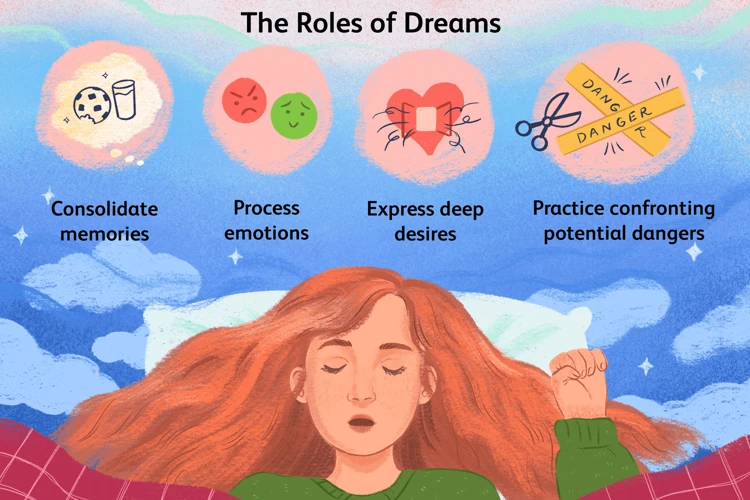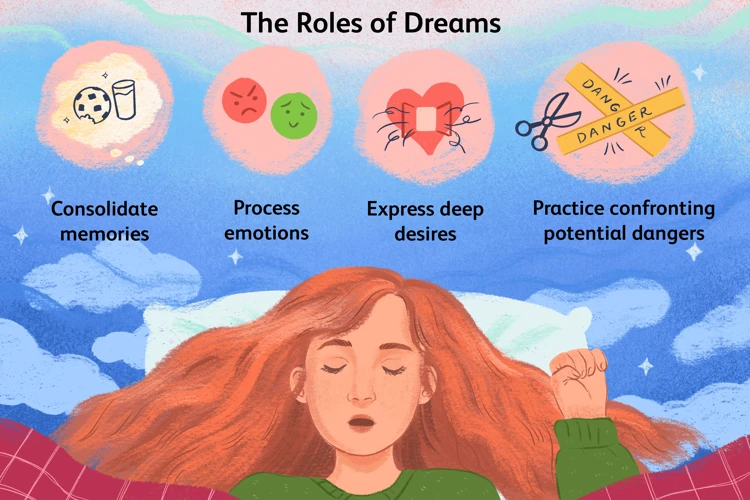Do you ever find yourself wondering what it would be like to have control over your dreams? To experience a world where anything is possible, where you can soar through the sky like a bird or teleport to your favorite destinations in an instant? Welcome to the fascinating world of lucid dreaming, a state of awareness within dreams that allows you to manipulate and direct your own experiences. In this article, we will explore the art of lucid dreaming and delve into techniques that can help you achieve lucidity and control over your dreams, specifically focusing on the exhilarating aspect of flight. Get ready to embark on a journey of imagination, as we uncover the tips and tricks to unlock the power of lucid dreaming and soar to new heights in your dream world.
What is Lucid Dreaming?

Lucid dreaming is a remarkable phenomenon where an individual becomes aware that they are dreaming while still in the midst of the dream. This heightened state of consciousness allows the dreamer to recognize that the events and experiences they are witnessing are not part of their waking reality, but rather a creation of their own mind. It is as if a veil has been lifted, granting the dreamer the ability to actively participate and manipulate the dream world. During a lucid dream, the dreamer can exercise control over various aspects of the dream scenario, including their own actions, surroundings, and even the laws of physics. While the exact mechanisms behind lucid dreaming are not fully understood, it is believed to be a result of increased self-awareness and the activation of certain regions of the brain associated with consciousness and introspection. Lucid dreaming opens up an exciting realm of possibilities, allowing individuals to explore their inner creativity, face fears, and experience sensations that may not be possible in waking life. Whether you are seeking adventure, self-discovery, or simply want to soar through the skies like a bird, lucid dreaming offers an extraordinary opportunity to tap into the limitless power of your imagination. If you are interested in the symbolic meaning of flying dreams, you can find more information here.
Benefits of Lucid Dreaming

Lucid dreaming offers a plethora of benefits that can enhance various aspects of your life. One of the key advantages is the ability to explore and fulfill your deepest desires and fantasies in a completely immersive and realistic way. Whether it’s soaring through the open sky, visiting exotic destinations, or interacting with beloved characters from books or movies, lucid dreaming allows you to experience these dreams as if they were real. This not only provides a sense of joy and fulfillment, but it also allows for personal growth and self-discovery. In addition to the sheer enjoyment of lucid dreaming, it can also be a powerful tool for overcoming fears and anxieties. By confronting and addressing fears within the safe realm of a dream, individuals can gradually desensitize themselves to these fears, leading to increased confidence and resilience in waking life. Lucid dreaming can also be a source of inspiration and problem-solving. Many renowned inventors, scientists, and artists have reported finding creative solutions or accessing groundbreaking ideas through their lucid dreams. Lucid dreaming can have a positive impact on sleep quality and overall well-being. It can help improve sleep patterns, increase self-awareness, and enhance overall brain function. So, why not unlock the potential of lucid dreaming and experience the freedom and empowerment it offers? Learn more about the symbolic interpretation of flying dreams here.
Preparing for Lucid Dreams

Preparing for lucid dreams is an essential step in increasing your chances of experiencing this unique state of consciousness. There are several techniques and practices that can help you enhance your dream recall and boost awareness within dreams. Here are some tips to help you prepare for lucid dreams:
1. Keep a dream journal: Maintaining a dream journal is a powerful tool for improving dream recall. Keep a notebook or journal by your bed and write down any dreams you remember as soon as you wake up. This practice helps train your mind to pay closer attention to your dreams and increases self-awareness.
2. Practice reality checks: Reality checks are simple exercises performed during waking hours to determine if you are dreaming or awake. By regularly questioning your reality, you increase the chances of conducting these checks while dreaming, which can lead to lucidity. Examples of reality checks include looking at your hands, trying to push your finger through your palm, or observing the details of your surroundings.
3. Set intentions before sleep: Before going to bed, set a clear intention to become lucid in your dreams. Visualize yourself becoming aware within a dream and affirm your desire to remember your dreams upon waking. This practice helps program your mind to prioritize and remain aware of dreaming during sleep.
4. Experiment with supplements: Some individuals find that certain supplements or herbs can enhance dream vividness and lucidity. Common options include vitamin B6, galantamine, and mugwort. However, it’s important to consult with a healthcare professional before experimenting with any supplements.
By incorporating these practices into your routine, you can pave the way for more lucid dreams and a deeper connection to your dream world. If you are interested in exploring the common interpretations of flying dreams, you can find more information here.
Techniques for Inducing Lucid Dreams

There are several techniques that can help induce lucid dreams, allowing you to unlock the incredible world of dream control. One such technique is reality checks, which involves performing simple tests throughout the day to check if you are dreaming or in a waking state. These reality checks can include examining the text on a sign or the time on a clock, and questioning whether it makes sense or changes in a dream. Another technique is the WBTB (Wake-Back-to-Bed) method, where you set an alarm to wake up after a few hours of sleep and then go back to bed with the intention of entering a lucid dream. The MILD (Mnemonic Induction of Lucid Dreams) technique involves repeating a mantra or affirmation before falling asleep, such as “I will have a lucid dream tonight,” to enhance your intention and increase your chances of experiencing a lucid dream. The SSILD (Senses Initiated Lucid Dream) technique focuses on cycling through sensory awareness by paying attention to visual, auditory, and physical sensations as you drift off to sleep. By practicing these techniques consistently and with dedication, you can increase your chances of having incredible lucid dream experiences.
Reality Checks
Reality checks are a key technique for inducing lucid dreams. These checks involve conducting regular assessments of your environment to determine whether you are in a dream or waking state. By establishing a habit of performing reality checks throughout the day, you increase the likelihood of incorporating this habit into your dreams, ultimately leading to lucidity. There are several types of reality checks you can try:
1. Nose pinch test: Pinch your nose and try to breathe through it. In a dream, you may still be able to breathe, despite pinching your nose.
2. Hand check: Examine your hands closely. In dreams, your hands might appear distorted, have an unusual number of fingers, or lack fine details like wrinkles or lines.
3. Text or clock test: Look at a piece of text or a clock, look away, then look back. In dreams, the text or numbers may appear scrambled, change, or become nonsensical when you look back.
4. Gravity test: Jump or float in the air with the intention of defying gravity. If you can effortlessly float or fly, chances are you are in a dream.
It is crucial to perform reality checks with a genuine sense of curiosity and skepticism, not just going through the motions. Additionally, developing a consistent reality check routine during waking hours will help establish the habit in your dreams, making it more likely for you to question your reality and achieve lucidity. Remember, reality checks serve as triggers to examine the nature of your environment and can serve as a gateway to the incredible world of lucid dreaming.
WBTB Technique
The Wake Back to Bed (WBTB) technique is one of the most popular and effective methods for inducing lucid dreams. This technique involves waking up from your sleep and then going back to bed with the intention of entering a lucid dream. Here’s a step-by-step breakdown of how to practice the WBTB technique:
1. Set your alarm: Before going to bed, set your alarm to wake you up after approximately 4-6 hours of sleep. This timing is crucial as it allows you to wake up during a period of REM (Rapid Eye Movement) sleep, when dreams are most likely to occur.
2. Get out of bed: When the alarm goes off, resist the temptation to hit the snooze button. Instead, get out of bed and engage in a wakeful activity for about 15-30 minutes. This could be reading a book, journaling, or simply stretching your body. This period of wakefulness helps to heighten your overall alertness and enhances your chances of becoming lucid in your upcoming dream.
3. Visualize your lucid dream: During the wakeful period, take some time to visualize the dream scenario you desire. Imagine yourself being fully aware, in control, and experiencing the sensation of flight. Emphasize the details in your visualization, such as the feeling of wind against your face or the panoramic view below you. Visualizing your desired dream outcomes helps set a strong intention and primes your mind for lucidity.
4. Go back to bed: After the wakeful period, return to bed with the intention of entering a lucid dream. As you lie down, focus your mind on the visualization you created earlier. Repeat affirmations to yourself, such as “I will have a lucid dream” or “I will fly in my dreams.” This reinforces your intention to become aware and in control during your dreams.
5. Relax and let go: Once you’re back in bed, relax your body and clear your mind. Avoid engaging in stimulating activities like scrolling through your phone or watching TV. Instead, cultivate a sense of calmness and receptivity to the dream world.
By combining the act of waking up from sleep with the conscious intent of lucid dreaming, the WBTB technique helps to disrupt your sleep pattern and increase the likelihood of experiencing lucidity in your dreams. It is important to note that the WBTB technique may require some experimentation and adjustment to suit your individual sleep patterns and preferences. With practice and patience, you can harness the power of the WBTB technique to enhance your lucid dreaming journey and unlock the exhilarating experience of flight in your dreams.
MILD Technique
The MILD (Mnemonic Induction of Lucid Dreams) technique is a popular method for inducing lucid dreams. It involves setting an intention to become lucid while you are falling asleep. Here’s how the MILD technique works:
1. Set your intention: Before you go to bed, repeat a phrase or positive affirmation to yourself, such as “I will have a lucid dream tonight” or “I am aware that I am dreaming.” This helps to prime your subconscious mind and reinforce the idea of lucid dreaming.
2. Visualize your dream: As you drift off to sleep, imagine yourself in a dream scenario. Visualize yourself becoming aware that you are dreaming and imagine carrying out specific actions or flying through the dream world. The key is to really immerse yourself in this visualization, creating a vivid and detailed mental picture.
3. Perform reality checks: Throughout the day, make it a habit to regularly perform reality checks. These are simple tests or observations that help you determine whether you are dreaming or awake. Examples of reality checks include trying to push your finger through your hand, looking at a clock and then looking away and back again to see if the time changes, or simply questioning the reality of your experience.
4. Wake up and go back to sleep: Set an alarm to wake yourself up about 4-6 hours after you initially fall asleep. Use this time to stay awake for a short period, reflecting on your dreams and practicing the visualization and intention-setting techniques described earlier. After about 20-30 minutes, go back to bed and try to fall asleep while maintaining awareness of your intention to have a lucid dream.
The MILD technique combines the power of intention-setting, visualization, and reality checks to increase the likelihood of achieving lucidity in your dreams. It takes practice and consistency, but with time, you may find yourself becoming more aware and in control of your dream experiences.
SSILD Technique
The SSILD (Senses Initiated Lucid Dream) technique is a unique and effective method for inducing lucid dreams. In this technique, the focus is on stimulating and engaging the senses to increase awareness and trigger lucidity during sleep. The SSILD technique involves a series of repetitive cycles, typically performed during a brief wake-up period in the middle of the night. Here are the steps to follow:
1. Set an alarm: Set an alarm to wake you up after approximately 4-5 hours of sleep. This is typically the time when REM sleep, where most dreaming occurs, is more prevalent.
2. Wake up and relax: When the alarm goes off, wake up gently and try to stay calm and relaxed. Avoid any stimulating activities that might fully wake you up. The goal is to maintain a state of drowsiness and prepare for the next steps.
3. Visualization: Close your eyes and visualize yourself in a familiar setting or imagine a specific scenario that you would like to dream about. This visualization helps to set an intention for your dream and enhances your focus on lucidity.
4. Sensory cycles: Begin the cycles by focusing on three different senses – sight, sound, and touch. Spend a minute or so intentionally focusing on each sense, allowing yourself to fully immerse in the sensations. For example, imagine vivid images, listen to the sounds in your mind, and feel the sensations on your skin.
5. Repeating cycles: Repeat the sensory cycles multiple times, going through each sense cycle for about a minute or two. The key is to maintain a gentle and relaxed focus on each sense without forcing or straining.
6. Falling back to sleep: After completing several cycles of the SSILD technique, let go of the intentional focus and allow yourself to drift back to sleep, maintaining a quiet and receptive state of mind.
The SSILD technique is known for its simplicity and effectiveness, as it capitalizes on the power of sensory engagement and intention setting to increase the likelihood of experiencing a lucid dream. It is important to note that success with this technique may vary for each individual, and consistent practice and patience are key. With regular application of the SSILD technique, you can enhance your chances of having lucid dreams and gaining control over your dream experiences.
Staying Lucid in Dreams

Staying lucid in dreams can sometimes be a challenge, as the dream state can easily transition into a regular, non-lucid dream. However, there are techniques that can help you maintain awareness and control within your dream world. One effective method is to perform reality checks, which involve questioning the nature of your reality and determining whether you are dreaming or awake. This can be done by examining your surroundings, looking at text or numbers, or trying to perform actions that would be impossible in waking life. Another strategy is to engage your senses within the dream, as this can help to solidify the experience and increase lucidity. By focusing on the details of your dream environment and actively listening, touching, and even tasting objects, you can enhance the vividness of the dream and maintain your lucid state. It is also crucial to maintain calmness and focus while lucid dreaming, as strong emotions like excitement or fear can quickly disrupt the dream and cause you to lose awareness. By cultivating a sense of relaxation and mindfulness, you can stay grounded in the dream and continue to exercise control over your experiences. Additionally, creating dream control techniques, such as imagining specific superpowers or visualizing desired outcomes, can help you maintain lucidity and direct the course of your dream. Remember, staying lucid in dreams requires practice and patience, but with these techniques, you can enhance your ability to explore and enjoy the wonders of your lucid dream world.
Reality Checking in Dreams
Reality checking is a crucial technique for maintaining lucidity within a dream. By performing reality checks, you are training your mind to question whether you are in a dream or in waking reality. This helps to establish a habit of critical awareness and increases the likelihood of recognizing when you are dreaming. There are several methods for reality checking that you can incorporate into your lucid dreaming practice:
1. Finger Counting: Look at your hand or count your fingers. In dreams, hand imagery or finger count can often appear distorted or generate a different number of fingers than expected. By regularly checking the number of fingers on your hand throughout the day, you will be more inclined to do the same while dreaming.
2. Reading Text: In dreams, text tends to change or become unreadable upon further examination. Make it a habit to check the text around you in reality and in your dreams. This can include signs, books, or digital screens.
3. Light Switches: Light switches can behave oddly in dreams, with the lights not responding to the switch or flickering inconsistently. By regularly testing light switches in reality, you will be more likely to question the functioning of lights in your dreams.
4. Breathing Test: Pinch your nose and try to breathe through it. In dreams, you may find that you can still breathe even with a pinched nose. In reality, of course, this would be impossible. This reality check helps to confirm whether you are in a dream or not.
Remember to perform reality checks throughout the day with a sense of curiosity and skepticism. By integrating these reality checks into your waking life, the habit will carry over into your dreams. This increased awareness and questioning will strengthen your ability to recognize when you are in a dream state and become lucid.
Engage Your Senses
Engaging your senses is a powerful technique to maintain lucidity and control in your dreams. Once you become lucid, take a moment to immerse yourself fully in the dream environment by focusing on each of your senses. Pay attention to the vividness of the colors around you, the textures of objects you touch, and the sounds that fill the air. Take a deep breath and inhale the scents of the dream world, allowing them to transport you deeper into the experience. By actively engaging your senses, you anchor yourself more firmly in the dream and prevent yourself from slipping back into a passive state. Additionally, engaging your senses can help enhance the realism of the dream, making it more immersive and enjoyable. To further intensify the dream experience, you can try to amplify the sensations. For example, if you’re flying in your dream, feel the rush of wind on your face, hear the whooshing sounds as you glide through the air, and visualize the breathtaking scenery beneath you. The more you engage your senses, the more present and connected you will feel within the dream, allowing for greater control and enjoyment of your lucid adventures.
Maintain Calmness and Focus
Maintaining calmness and focus is crucial for staying lucid and in control within your dreams. As you become aware that you are dreaming, it’s natural to feel a rush of excitement and exhilaration. However, it’s essential to find a balance and remain calm to prevent destabilizing the dream state. Excitement can often lead to a loss of lucidity and a quick return to a regular dream. To maintain calmness, take slow and deep breaths, reminding yourself that you are in a lucid dream and have control over your experience. Another helpful technique is to engage your senses by focusing on the details of your surroundings – feel the textures, notice the colors, and listen to the sounds. By grounding yourself in the present moment, you can anchor your awareness and prevent it from slipping away. It is also important to stay focused on your intentions and goals within the dream. Remind yourself of what you want to achieve or experience, and continue to direct your attention towards that objective. By maintaining a clear and unwavering focus, you enhance your ability to shape and control the dream environment. So, remember to stay calm, embrace the excitement, and keep your mind centered on your lucid dreaming goals.
Create Dream Control Techniques
One of the most exciting aspects of lucid dreaming is the ability to actively control and manipulate the dream environment. To enhance your dream control skills, it is important to develop specific techniques that allow you to exert your influence over the dream world. Here are a few effective strategies to create dream control techniques:
1. Visualization: Visualizing your desired outcomes within the dream can help manifest them. Before going to sleep, visualize yourself successfully performing various activities in your dream, such as flying or teleporting. The more vivid and detailed your visualizations, the stronger your control over the dream environment will become.
2. Mental Commands and Intentions: Use the power of your mind to give commands and set intentions in the dream. For example, you can mentally command the dream to stabilize or enhance your lucidity. You can also set intentions to encounter specific dream characters, visit certain locations, or experience particular scenarios.
3. Superpowers and Imagery: Embrace the limitless possibilities of the dream world by imagining yourself possessing extraordinary abilities. Visualize yourself having the power to fly effortlessly, control the elements, or manipulate objects at will. By incorporating these superpowers and imagery into your dreams, you can enjoy even greater levels of control and adventure.
4. Physical Body Movements: Engaging your physical body within the dream can enhance your sense of control. For example, if you want to fly, imagine yourself flapping your arms like wings or jumping into the air with the intention of taking flight. By mimicking these physical movements, your mind connects the action with the desired outcome in the dream.
Remember, dream control techniques can be highly personal, so feel free to modify and experiment with different methods to find what works best for you. The key is to practice these techniques consistently and develop a strong sense of belief and expectation that you can control your dreams. With time and dedication, you can become a master of controlling your dream environment and unlock the full potential of lucid dreaming.
Controlling Flight in Dreams

Controlling flight in dreams is an exhilarating aspect of lucid dreaming that allows dreamers to soar through the sky and explore new heights. There are several techniques and strategies that can be employed to gain control over your flight experiences within the dream world. One effective method is visualization, where you vividly imagine yourself effortlessly flying through the air with complete confidence and ease. Another technique involves using mental commands and intentions to guide your flight, such as focusing your thoughts on where you want to go and how you want to maneuver. Additionally, tapping into your imagination and incorporating superpowers or imagery can enhance your ability to control your flight, whether it be summoning wings or visualizing yourself as a superhero. Physical body movements, such as spreading your arms wide or propelling yourself forward, can also be employed to enhance the sensation of flight and improve control. By combining these techniques and experimenting with different approaches, dreamers can unlock the freedom and excitement of flight in their lucid dreams, taking their dream experiences to new heights of exploration and adventure.
Visualization Techniques
One effective method for controlling flight in lucid dreams is through the use of visualization techniques. Visualization involves vividly imagining the desired outcome or scenario in your mind, as if it were already happening. Here are some visualization techniques to enhance your flight control in dreams:
1. Mental Imagery: Close your eyes and create a clear mental picture of yourself flying. Visualize the sensation of floating in the air, feeling the wind against your face, and the freedom of soaring through the sky. Engage all your senses and make the visualization as vivid and detailed as possible. By repeatedly visualizing yourself flying, you strengthen the neural connections associated with this experience and increase the likelihood of manifesting it in your dreams.
2. Dream Environment: Before going to bed, imagine various dream landscapes where you can fly. Picture lush green fields, snowy mountain peaks, or vast ocean expanses. Visualize yourself effortlessly navigating through these dream environments, exploring every detail, and experiencing the joy of flight in each scene. By mentally rehearsing these scenarios, you are priming your subconscious mind to recreate them in your lucid dreams.
3. Positive Affirmations: Repeat affirmations related to flight and dream control throughout the day. Phrases like “I am a skilled lucid dreamer” or “I have complete control over my dreams” can help program your subconscious mind and reinforce your intent to fly in your dreams. Combine these affirmations with visualizations of yourself successfully maneuvering through dream skies, reinforcing the belief that you can achieve flight control in your lucid dreams.
4. Dream Wings: Another visualization technique involves imagining that you have wings sprouting from your back. Visualize them unfolding, feeling their weight, and sensing the power they possess. Focus on the sensation of flapping your wings and propelling yourself upward into the sky. This visualization can trigger the subconscious mind to incorporate wings into your dream body, granting you the ability to take flight.
Remember, the key to effective visualization is to engage all your senses, believe in your ability to control your dreams, and consistently practice these techniques. With time and persistence, you will strengthen your visualization skills and increase your chances of mastering flight control in your lucid dreams.
Mental Commands and Intentions
In the realm of lucid dreaming, mental commands and intentions play a key role in controlling various aspects of the dream, including the ability to control flight. By employing the power of your thoughts and directing your focus, you can influence the dream environment and shape the experiences within it. One effective technique is to mentally command yourself to fly or levitate. As you become lucid in the dream, firmly state to yourself, “I am able to fly effortlessly and gracefully.” Visualize yourself soaring through the air with ease, feeling the exhilaration and freedom that comes with it. Another helpful approach is to set clear intentions before entering the dream state. During your pre-sleep preparation, affirm your intention to have a lucid dream where you have full control over your flight. Repeat positive affirmations such as, “Tonight, I will become lucid in my dream and fly with complete control and confidence.” By programming your subconscious mind with these intentions, you increase the likelihood of a lucid dream where you can command your flight effortlessly. Remember, belief in your ability to control the dream is essential. Trust yourself and embrace the power of your intentions to take flight within the dream realm.
Superpowers and Imagery
In the lucid dream world, you have the ability to unlock incredible superpowers and manifest extraordinary imagery. This aspect of lucid dreaming allows you to tap into your wildest fantasies and embrace a sense of unlimited power and control. Here are some techniques to enhance your experience with superpowers and imagery during lucid dreaming:
1. Imagination Amplification: Activate your imagination by visualizing the superpower or imagery you desire. Imagine yourself with extraordinary abilities, such as flying with the grace of a bird or shooting fireballs from your hands. The more vivid and detailed your visualization, the more likely it is to manifest in your dream.
2. Embody the Superpower: Instead of just visualizing the superpower, fully immerse yourself in the experience. Feel the wind rushing through your hair as you fly, or sense the heat from your fireballs. By embodying the superpower in your dream, you enhance the realism and intensity of the experience.
3. Summon Objects or Characters: In addition to superpowers, you can also conjure specific objects or characters into your dream. Whether it’s a magical staff, a trusted sidekick, or a mythical creature, the dream world is your canvas to create and interact with whatever you desire.
4. Set Dream Goals: Before entering a lucid dream, set specific goals for what superpower or imagery you want to experience. This mental intention helps to focus your mind and increases the likelihood of achieving your desired outcome.
5. Experiment and Learn: Utilize your lucid dreams as a learning opportunity to discover new superpowers and explore different imagery. Play around with your abilities and observe how your dream world responds. This experimentation can lead to exciting discoveries and a deeper understanding of your dreaming potential.
Remember, the possibilities in a lucid dream are boundless. Allow your imagination to flourish and embrace the exhilarating experience of embodying superpowers and creating awe-inspiring imagery within your dreams.
Physical Body Movements
Physical body movements play a crucial role in controlling and enhancing the experience of flight in lucid dreams. By incorporating intentional movements with your physical body during the dream, you can enhance the sensation of flying and increase your sense of control. One effective technique is to start by gently flapping your arms as if they were wings. As you do this, visualize yourself soaring higher and higher into the sky. The physical act of flapping your arms helps to anchor the sensation of flying in your body, making it feel more realistic and immersive. Another technique is to mimic the movements of a specific flying creature, such as a bird or a butterfly. By embodying the motions of these creatures, you can tap into their graceful and effortless flight patterns. This can not only enhance the realism of your flying experiences but also deepen your connection to the dream environment. Additionally, incorporating movements such as leaning forward, twisting, or spreading your arms wide can affect your direction and speed in the dream. Experiment with different movements and observe how they impact your flight. Remember, the key is to maintain a sense of relaxation and fluidity to ensure a smooth and enjoyable flight experience. So the next time you find yourself lucidly soaring through your dreamscape, don’t forget to engage your physical body and let your imagination take flight.
Enhancing Lucid Dreaming and Flight Control

Enhancing lucid dreaming and flight control is an exciting endeavor that can take your dream experiences to new heights. Here are some techniques and practices to enhance your lucid dreaming abilities and gain better control over your flight within dreams:
1. Dream Journal: Keeping a dream journal is an essential tool for enhancing lucid dreaming. Write down your dreams immediately upon waking to train your mind to remember them more vividly. This practice increases your dream recall over time and helps you identify recurring dream signs or patterns that can act as triggers for lucidity.
2. Reality Checks: Perform reality checks throughout the day to develop a habit of questioning your reality. These checks involve performing actions that would reveal whether you are in a dream or waking life. For example, try to push your finger through your palm or read a line of text twice to see if it changes. This habit will carry over into your dreams, prompting lucidity as you question the consistency of your dream reality.
3. Meditation: Regular meditation can improve your focus, mindfulness, and self-awareness, all of which are beneficial for lucid dreaming. Practice meditation before bed to calm the mind and increase your chances of entering a lucid dream state. Additionally, mindfulness meditation can help you stay grounded and focused within the dream, making it easier to control your flight experiences.
4. Visualizations: Visualization exercises are valuable for enhancing lucid dreaming and can be particularly useful for controlling flight. Before falling asleep, imagine yourself soaring through the sky, feeling the wind rushing past you, and experiencing the exhilaration of flight. This visualization practice primes your mind for similar flight experiences within your dreams.
5. Reality Testing in Dreams: Once you achieve lucidity in a dream, perform reality checks to solidify your lucid state. Confirm that you are dreaming by trying to push your finger through your palm or looking at a clock to observe if the time changes erratically. These reality tests serve as anchors to keep you present in the dream and reinforce your control over flight.
6. Practicing Motion Control: Experiment with different methods of flight control within your dreams. Some dreamers find it helpful to visualize themselves with wings, using their arm movements to guide their flight. Others imagine using their mind to levitate or control the environment around them. Explore different techniques and find what works best for you.
7. Affirmations: Use positive affirmations to program your subconscious mind for lucidity and flight control. Repeat statements such as “I am aware that I am dreaming” or “I have complete control over my flight in dreams.” By affirming these beliefs, you condition your mind for conscious flight experiences during your dream states.
Remember, enhancing lucid dreaming and flight control takes practice and patience. With consistent effort and a curious mindset, you can unlock the full potential of your dream world, soaring through the skies with freedom and exhilaration.
Interacting with the Dream Environment
Interacting with the dream environment is a key aspect of lucid dreaming, as it allows you to fully explore and engage with the world you have created. Once you have achieved lucidity, there are various techniques and strategies you can employ to enhance this interaction.
1. Engage Your Senses: To make the dream environment more vivid and realistic, engage your senses. Take a moment to observe the details of your surroundings – the sights, sounds, smells, and textures. Touch objects, listen to the sounds, and immerse yourself in the sensory experience. By actively engaging with your senses, you can deepen the dream and make it feel more tangible.
2. Experiment with Telekinesis: In the world of lucid dreaming, you have the power to manipulate objects with your mind. Try using telekinesis to move things, change their shape, or even create objects out of thin air. Visualize the objects moving or changing according to your intentions, and believe in your ability to control them. This can be a fun and empowering way to interact with the dream environment.
3. Explore Different Locations: Use your lucidity to explore different dream locations. You can teleport to different places by simply envisioning the desired location and willing yourself to be there. This ability to travel instantly can open up a world of exploration and adventure within your dreams. From ancient cities to outer space, the dream world is your playground.
4. Summon Dream Characters: Interacting with dream characters can add depth and intrigue to your lucid dreams. You can summon specific individuals, fictional characters, or even create new characters to interact with. Engage in conversations, ask them questions, or go on adventures together. The interactions with dream characters can be an opportunity for self-reflection, gaining insights, or simply enjoying the company of fascinating characters.
5. Experiment with Time Manipulation: In lucid dreams, time can be fluid and flexible. You can experiment with speeding up or slowing down time, allowing you to savor moments or explore a greater range of experiences within the dream. Try extending a pleasurable moment or compressing a less enjoyable scenario to maximize your dream experience.
Remember, the dream environment is a reflection of your own mind and imagination, and you have the power to shape it to your will. The more you practice and experiment with different interaction techniques, the more control and agency you will have within your lucid dreams. Embrace the possibilities, explore the depths of your creativity, and enjoy the remarkable experiences that lucid dreaming can offer.
Conclusion
In conclusion, lucid dreaming is a fascinating and empowering experience that allows individuals to become active participants in their own dreams. By practicing various techniques and maintaining a mindset of curiosity and intention, anyone can learn to enter the state of lucidity and gain control over their dream world. The benefits of lucid dreaming extend beyond the realm of entertainment, as it can be utilized for personal growth, problem-solving, and even therapeutic purposes. Additionally, the ability to control flight within dreams adds an extra layer of excitement and freedom to the lucid dreaming experience. Through visualization techniques, mental commands, and the use of superpowers, dreamers can soar through the skies and explore new horizons. By enhancing lucid dreaming and flight control skills, individuals can unlock the full potential of their dream world and use it as a tool for self-discovery and inspiration. So, get ready to spread your wings and take flight in the limitless landscape of your dreams. The adventure awaits!
Frequently Asked Questions
1. How can I tell if I am in a lucid dream?
There are a few signs that can indicate you are in a lucid dream. Some common indicators include a sudden realization that you are dreaming, the ability to think and reason clearly within the dream, and the ability to control your actions and the dream environment.
2. Is it possible to learn how to have lucid dreams?
Absolutely! Lucid dreaming is a skill that can be learned and developed with practice. By employing certain techniques and strategies, such as reality checks and dream journaling, you can increase your chances of having lucid dreams.
3. Can lucid dreaming be beneficial for personal growth?
Yes, lucid dreaming can be a powerful tool for personal growth and self-discovery. It provides an opportunity to explore your subconscious mind, face fears, and gain insights into your thoughts and emotions.
4. Are there any risks associated with lucid dreaming?
For the majority of people, lucid dreaming is a safe and enjoyable experience. However, it is important to maintain a healthy sleep routine and not solely focus on lucid dreaming at the expense of overall well-being.
5. Can anyone learn how to fly in their lucid dreams?
While flying is a common and exhilarating experience in lucid dreams, the ability to fly may vary from person to person. Some individuals may find it easier to fly in their dreams, while others may need to practice certain techniques to achieve flight.
6. What role do reality checks play in lucid dreaming?
Reality checks are a crucial technique in lucid dreaming. These checks involve questioning the nature of your reality throughout the day, which then carries over into your dreams. By consistently performing reality checks, you can increase your likelihood of recognizing when you are dreaming.
7. How can I stay in a lucid dream for longer periods?
To prolong your lucid dream experiences, it is important to stay calm and focused within the dream. Engaging your senses, maintaining a sense of control, and avoiding excessive excitement can help you stay in the lucid dream state for longer durations.
8. Can I choose the destinations I want to visit in my lucid dreams?
Absolutely! Lucid dreaming allows you to have complete control over your dream environment. With practice, you can visualize and manifest specific dream landscapes and destinations, exploring them at your leisure.
9. Are there any supplements or aids that can enhance lucid dreaming?
While there are certain supplements and aids that claim to enhance lucid dreaming, it is important to exercise caution and consult with a healthcare professional before using them. It’s always best to focus on natural techniques and methods first.
10. Can lucid dreaming be used to overcome nightmares or recurring dreams?
Yes, lucid dreaming can be a helpful tool for overcoming nightmares or recurring dreams. By becoming lucid within these dreams, you are empowered to confront and modify the dream narrative, transforming a negative experience into a positive one.








